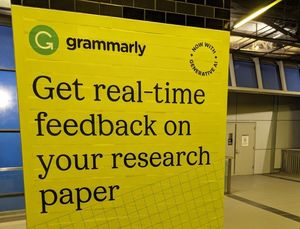I was very interested to read this brief piece about the ‘new discipline’ of ‘computational advertising’:
Web advertising is the primary driving force behind many Web activities, including Internet search as well as publishing of online content by third-party providers. A new discipline – Computational Advertising – has recently emerged, which studies the process of advertising on the Internet from a variety of angles. A successful advertising campaign should be relevant to the immediate user’s information need as well as more generally to user’s background and personalized interest profile, be economically worthwhile to the advertiser and the intermediaries (e.g., the search engine), as well as be aesthetically pleasant and not detrimental to user experience. [ACL-08: HLT – Tutorials]
This is from the notice about a tutorial session at ACL-08: HLT which is taking place in Columbus in June. The conference combines the Annual Meeting of the Association for Computational Linguistics (ACL) with the Human Language Technology Conference (HLT) of the North American Chapter of the ACL.
Given the nature of the conference, the tutorial has a particular focus:
In this tutorial, we focus on one important aspect of online advertising, namely, contextual relevance. It is essential to emphasize that in most cases the context of user actions is defined by a body of text, hence the ad matching problem lends itself to many NLP methods. At first approximation, the process of obtaining relevant ads can be reduced to conventional information retrieval, where one constructs a query that describes the user’s context, and then executes this query against a large inverted index of ads. We show how to augment the standard information retrieval approach using query expansion and text classification techniques. We demonstrate how to employ a relevance feedback assumption and use Web search results retrieved by the query. This step allows one to use the Web as a repository of relevant query-specific knowledge. We also go beyond the conventional bag of words indexing, and construct additional features using a large external taxonomy and a lexicon of named entities obtained by analyzing the entire Web as a corpus. Computational advertising poses numerous challenges and open research problems in text summarization, natural language generation, named entity extraction, computer-human interaction, and others. The last part of the tutorial will be devoted to recent research results as well as open problems, such as automatically classifying cases when no ads should be shown, handling geographic names, context modeling for vertical portals, and using natural language generation to automatically create advertising campaigns. [ACL-08: HLT – Tutorials]
Via Michael White.



